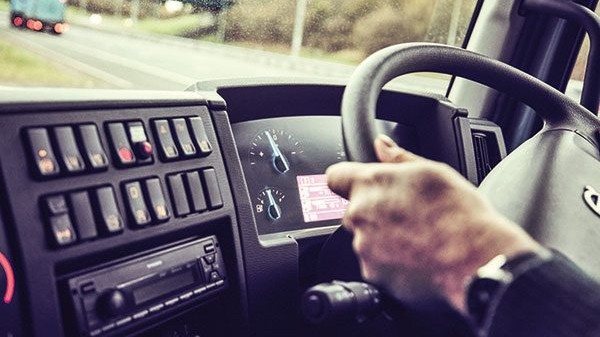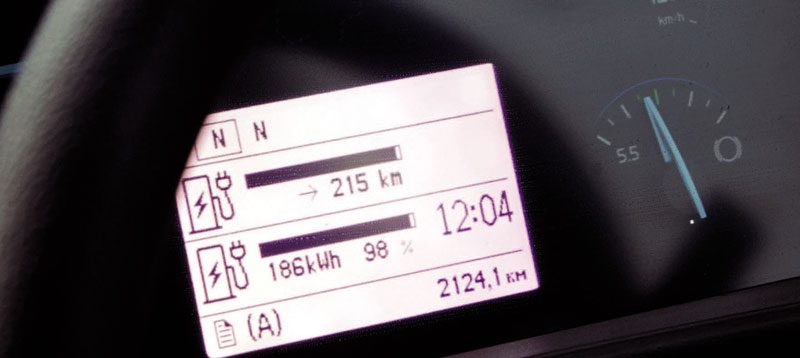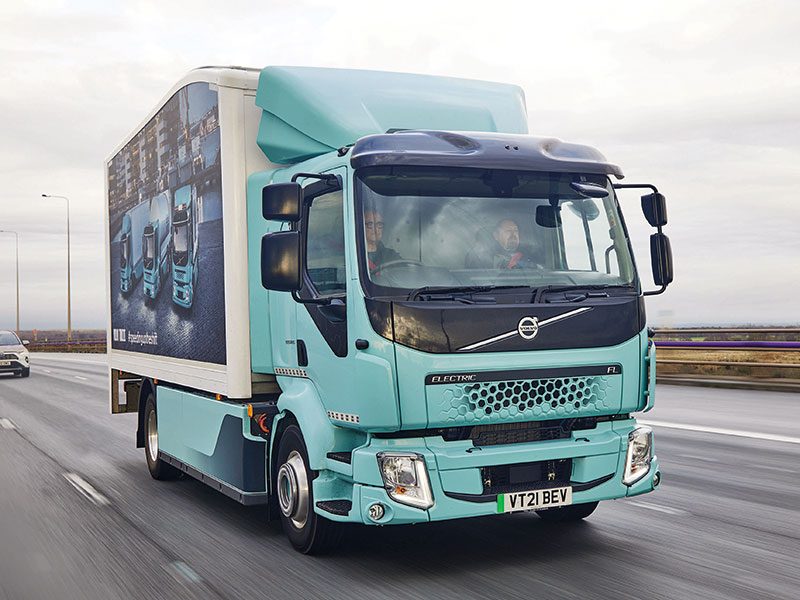Behind the wheel

If you overlook the distinctive grille, the eFL doesn’t look too dissimilar to its diesel-powered sibling from the outside, and the same is true behind the wheel. There’s no central seating position or space-age dials and switchgear, which in my opinion is no bad thing. It’s all just very functional and easy to get to grips with, which is exactly what you want if drivers are regularly changing between diesel and battery-powered trucks. The dashboard binnacle houses four dials, consisting of a speedometer, range gauge, regenerative brake indicator and a needle, which simply indicates whether it’s replenishing or taking energy from the battery. In the centre is a digital screen, which notifies you of your current range and battery life.
Firing-up is simply a case of turning the key two stages and waiting until the blue-lit dials spring into life. Then you select ‘D’ on the dash-mounted switch, disengage the mechanical handbrake, and stealthily begin your journey.

Unlike some electric trucks I’ve driven, the eFL really is extremely quiet inside the cab. There’s very little creaking of suspension components and whirring of power steering motors to break the silence, and the interior is rattle-free. Good build quality is essential for electric trucks, as they’ll likely be on the road for far longer than their diesel equivalents, as owners attempt to recoup the initial purchase price by running them for at least 10 years.
In London, I began to wonder whether it was actually too quiet. While driving around the side streets, several people walked out in front of it. This happens in London all the time anyway, but its stealth-like qualities aggravated the problem. I took a few pigeons by surprise too.

As you’d expect, the truck is most at home in the urban environment, where the two-speed box and instant torque combine to give smooth and impressively quick acceleration. With no vibrations or noises, I’d far sooner sit in a traffic jam in this than any ICE vehicle. It’s just such a relaxed and peaceful place to be.
In other electric trucks I’ve driven, you operate the regenerative braking with the repurposed engine brake lever. By engaging it in stages, you can determine how quickly you slow down, effectively doing away with the need for the service brakes. But it’s different in the eFL, which has had the lever removed. Instead, there’s a button on the dashboard, which when engaged, allows power to be put back into the battery via the footbrake. The harder you press, the greater the level of regeneration.

Much of my journey took me on the motorway, where the truck performed far better than I was expecting. With the cruise control set at 85kph, it felt perfectly at home. It’s well planted too, helped by the low centre of gravity from the batteries it carries.
While the battery gauge appears to be 100% reliable, I soon learned not to rely too heavily on the predicted range display. It appears to make its prediction based on immediate driving conditions, rather than taking a longer journey average. Consequently, if you climb a short hill, the range can drop by 30 or 40km. In the future, electric trucks will no doubt be able to calculate a more precise predicted range for a pre-planned route, using GPS-based topography data, vehicle weight, traffic and weather conditions.

>>>>>BACK TO MAIN<<<<<<





